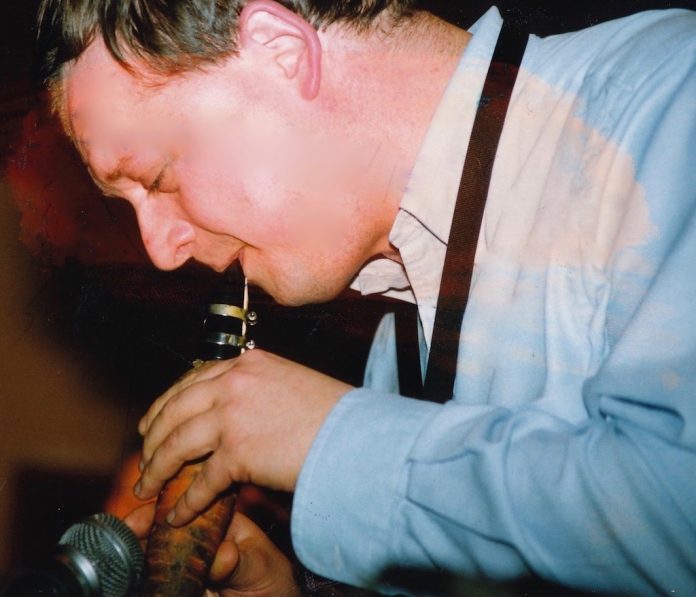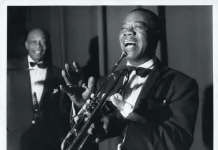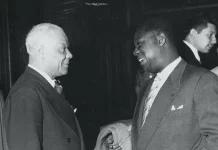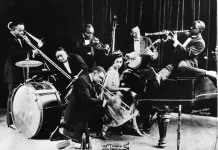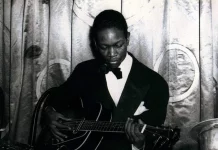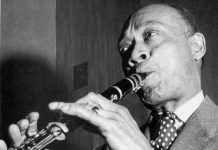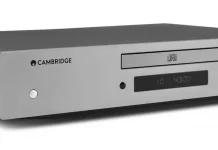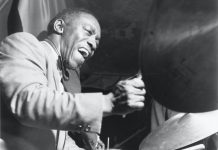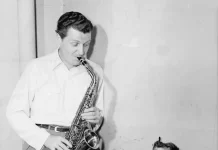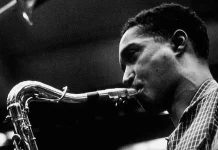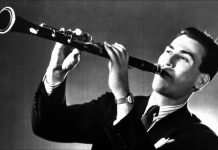This piece was written for Jazz News, where it appeared in 1962. Times were different then, and I have let the original essay be. Thus, those who care about such things will not find this essay to be, er, woke.
Blow By Blow, Part 1
People come by musical instruments in funny ways. Some buy them, led on by the idiot appeal of the latest “easy to play as a tin whistle” advertisement for a cheap clarinet. Some have grandfathers who bequeath them their tubas when they come to the final owning up. Others join organisations like the Salvation Army or the local works brass band and pinch something. The more daring break into Humph’s Mercedes and pinch his trumpet. The more mundane find banjos in the attic or even, like a man I know, a complete drum kit on the city dump.
The way to avoid all this is to confine your talents to the piano and rely on there always being one handy. This last course should only be taken in desperation because, as far as British jazz is concerned, the piano (and consequently pianists) is about as fashionable as the polka.
George Lewis uses a soft reed, probably made from compressed grass, while Sidney Bechet used washable orange peel. John Coltrane and Coleman Hawkins use half-inch teak, recommended only for those with the jawbone of an ass
Let us assume that you have acquired an instrument by one of these methods. The most urgent problem is to ascertain which instrument you have. Your next concern is to produce a sound on that instrument.
We shall deal with wind instruments first. As a general rule noise is made by blowing on the end upon which you would least like to sit – for convenience we shall refer to it as the “thin” end. Place the thin end to your lips and blow hard. If you know that the instrument which you are holding to your lips looks vaguely like a clarinet, you should get some kind of screaming noise. If not, and you simply get a rush of wind, you have either a gas poker or possibly a clarinet without a reed.
The term “reed” is a misnomer, for this is no mere piece of pond vegetation. Nor can it be manufactured from any old piece of firewood. It is a precision product which is very thick at one end and very thin at the other. It is fastened over the hole at the thin end of the instrument by a thumbscrew-like object which is referred to as a ligature. Different players use different types of reeds. George Lewis uses a soft reed, probably made from compressed grass, while Sidney Bechet used washable orange peel. John Coltrane and Coleman Hawkins use half-inch teak, recommended only for those with the jawbone of an ass. Pee Wee Russell doesn’t use a reed at all, preferring to substitute the method of dynamic tension employed by Charles Atlas for kicking sand in the faces of small men on the beach.
Let us assume that you have your reed firmly in position and can produce a sound of some sort on what we have by now determined is your clarinet.
Now you must learn what keys to play in. There are only two keys as far as the clarinet in British jazz is concerned. These are B flat and C (known to snobs as B sharp). The latter is the simpler to learn. You will find that you will at first fall over several times. Get hold of a record of C Jam Blues from somewhere and put it on your gramophone. Now blow on your instrument until it seems to you that the noise you are making is not disrupting the music on the record (this can be deceptive according to your degree of egotism). When you have achieved this successfully you will be playing within a stone’s throw of C and it is time to move onto B flat.
To be able to play in B flat is rather more difficult because it is essential first of all to be able to tell a fast performance from a slow one. Your friends will help you in this. Get them to find you a slow record by any British trad band. This is in B flat, and you simply repeat the performance you went through with C.
An excellent method of keeping your jazz sound in trim is a prolonged, repetitive and assiduous reading of romantic novels about doctors and nurses. This helps you to get that self-pitying wail into your playing
If you want to get by in a band it is essential that you know all the numbers which you are likely to be required to play. These are Burgundy Street Blues and Mama Don’t Allow. You must learn them by heart and learn the various tempi at which they are played alternately throughout the evening under such titles as God You Sure Been Tough On Me, Lounger On The Beach, Clarinet Lament, Clarinet Stomp, Clarinet Blues and so on. After a few months of doing this for three nights a week you will find that you can play The Saints without ever consciously trying to learn it.
An excellent method of keeping your jazz sound in trim is a prolonged, repetitive and assiduous reading of romantic novels about doctors and nurses. This helps you to get that self-pitying wail into your playing.
May we pass on to those who feel that the instrument they have in their possession is not a clarinet? Hold the instrument again with the thin end to the lips. Stretch your arm alongside it at full length. If you cannot touch the end of the instrument you are either a dwarf or else the instrument is a trombone.
If you are not a dwarf then you are indeed fortunate, for the trombone is an instrument upon which it is easy for all except the most introvert and broken-winded to obtain a virtuoso status. At first, when attempting to blow the instrument, it is recommended that you hold the thin end to your mouth with both hands and trap the loop of metal which you will then find falling about with one of your feet. You will find that you will at first fall over several times while doing this, but, with a reasonable amount of practice, it becomes possible to maintain the position for quite a long time without extreme discomfort.
Having succeeded in trapping this loop, which is known in technical circles as the “slide”, you may now blow hard down the little hole at the thin end. If this results in a tiny angry circle around your upper and lower lips (which may bleed) then the instrument has lost its mouthpiece. With a little craftsmanship one can be manufactured from a small, fairly robust plastic egg cup.
No technical knowledge is required to play the trombone. One just blows it in the heartiest manner possible and waves the slide around vigorously
No technical knowledge is required to play the trombone. One just blows it in the heartiest manner possible and waves the slide around vigorously, beaming around the auditorium at the same time. The slide is provided merely for adornment (something like a peacock’s tail) and you will find that you can play like Jim Robinson by making full use of the half dozen notes which can be played while the slide is closed.
The most important thing in trombone playing is to make sure that you have the correct size of bowler hat. A tight hat band can play havoc with the embouchure.
Is it correct for a trumpet player to have his teeth removed in order to get the Bunk Johnson gum sound? Mr Johnson wore twine stretched across the gap between his canines to lay his mouthpiece on when he felt like a rest.
This is one of the questions we shall examine in our next exploration. Attention will also be given to band uniforms – do diagonally-striped waistcoats produce better musicians? Part 2 of the Voce Diploma Course will appear next month.

